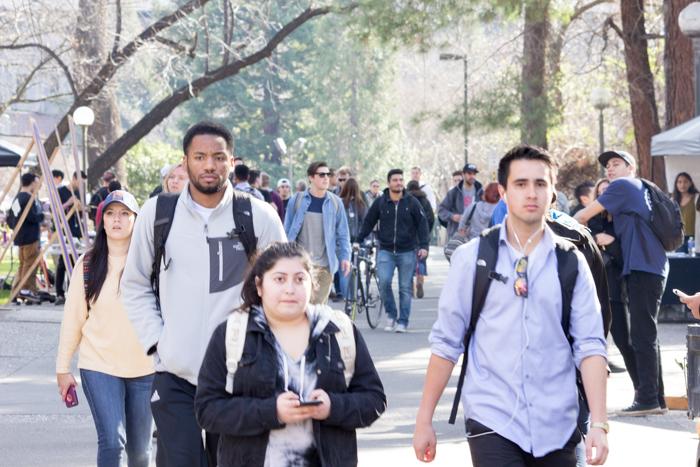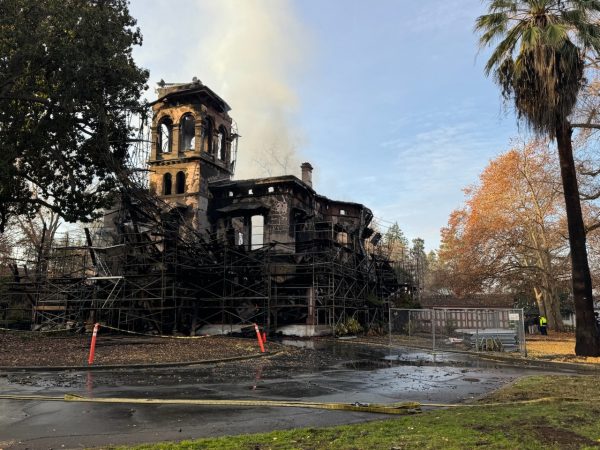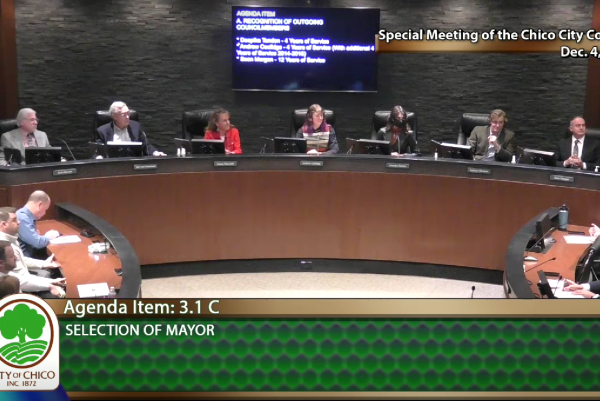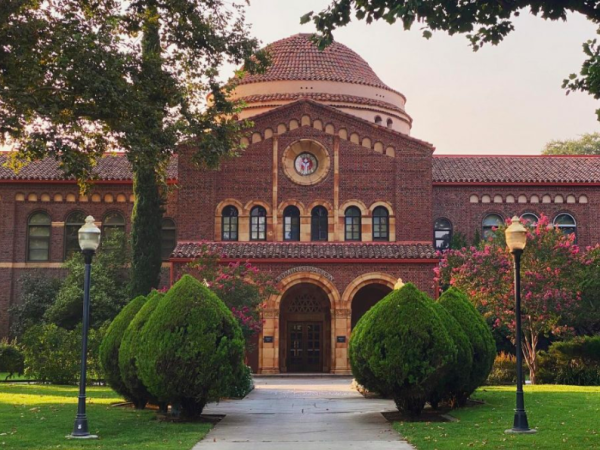Multi-year diversity plan works, for the most part
Part of the school’s plan is to have the number of black undergraduates reflect California’s demographics. Photo credit: Ryan Corrall
Chico State’s Diversity Action Plan is working, but is also a work-in-progress.
Benchmarking the successes and chalking up the failures, administrators said the plan has given them a better sense of how to craft a more effective plan for 2017.
The plan was released in January 2011 and served as the guide for Chico State’s diversity efforts over the following six years, 2016 being the last. The document included eight priorities with four overlapping themes: access and success, education and scholarship, intergroup relations and campus climate, institutional vitality and viability.
The big idea was getting every office, department and college involved in forming a more inclusive learning community for students and employees, said Tray Robinson, director of the Office of Diversity and Inclusion.
Robinson said the plan helped to develop several events and programs for employees and students, including REACH, whose goal is helping first-generation students succeed. It also facilitated the demographic shift of students in recent years, proceeding a strategic push by the institution to recruit students of color.
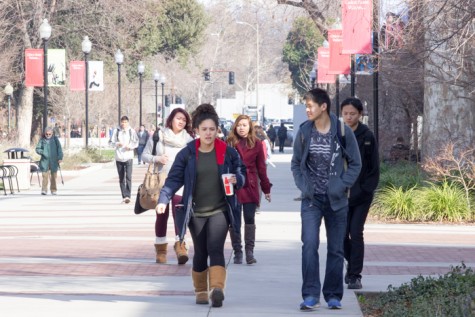
Riding the coattails of California State University’s Graduation Initiative, Robinson said the plan further increased graduation rates of minorities and narrowed the elusive “achievement gap” — the disparity of academic outcomes between distinct student populations, such as rich and poor, whites and minorities.
“Too often, many people look at diversity as this add-on thing that they have to do,” Robinson said. “In all honesty, it’s part of what we do on a daily basis.”
Once the plan was released, resources for diversity initiatives increased notably, according to annual reports. The Office of Diversity and Inclusion was created as a result, and so were workshops for hiring committees that focused on teaching strategies for avoiding unconscious bias.
These workshops may have been effective models of learning, but not as a means to diversify Chico State’s workforce, according to university data.
President Paul Zingg has reported the university’s diversity endeavors to the campus community in emails and past convocation speeches.
“We’ve done better with administration. We’ve done better with staff. But we have not made the kind of progress with faculty that plan envisioned,” Zingg said, responding to a question about Chico State’s hiring practices.
According to the Office of Institutional Research, white faculty went from 82.3 percent in 2011 to 79.1 percent in 2015, while the percentage of black, Hispanic, Asian and Native American faculty remained relatively stagnant over the same period.
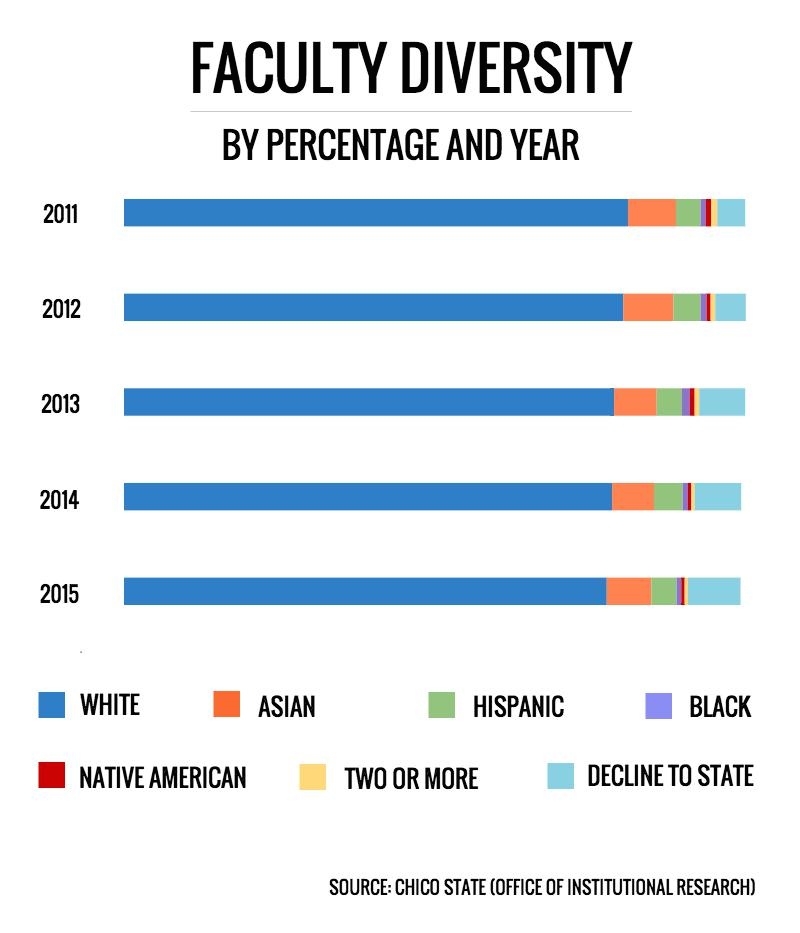
Zingg said he’s watched Skype interviews where search committees are “overwhelmingly Caucasian” and noticed both candidate and committee members appear “tense.”
“How do we say to an African-American male what it’s like to be an African-American in Chico? It’s things like that that require us to be just more sensitive,” he said.
Black students have a smaller population than the plan’s goal as well. The goal is having student populations be reflective of the California demographic.
California had a black population of 6.5 percent in 2014, according to federal records. Chico State had a black student population of 2.5 percent in 2015, according to university records.
By comparison, the number of Hispanic students has increased remarkably. From 2011 to 2015, the population of Hispanic students went from 17.6 percent to 28.8 percent.
The diversity plan notes a task for continuing “progress toward achieving the designation of ‘Hispanic Serving Institution.'” The HSI designation, a status determined by the U.S. Department of Education, means an institution has 25 percent full-time undergraduates who identify as Hispanic, as well as 50 percent or more of low-income students.
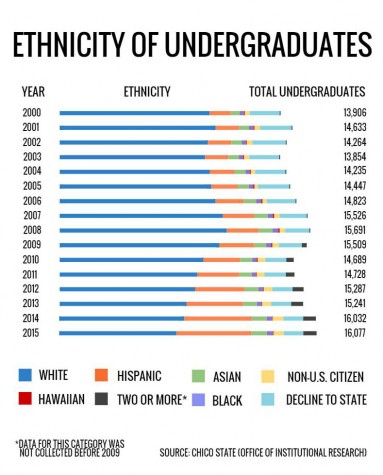
In October 2015, Zingg appointed Teresita Curiel as the university’s interim assistant director of HSI initiatives. Curiel said the university is closer than ever to being eligible for HSI benefits. This spring Chico State may apply for the designation and enter a grant competition simultaneously, she said.
Usually institutions must be officially designated before applying for grants. But the communication she’s received from the education department indicates Chico State has the green light to compete without having the official designation.
Eighteen of 23 CSU campuses already have the HSI designation.
“The grants are going to be very important to enhance the experience, not just for Latino students, but for students in general,” Curiel said. “But with or without the grants, we still need to engage in dialogue about how we serve the students who are here and now.”
Robinson agreed. Moving forward, the university is going to form a committee to create a new and improved Diversity Action Plan for 2017 and beyond, he said.
“One of the biggest things that we need to do is develop more measures of accountability to ensure that the entire campus community is going to participate in the development of the Diversity Action Plan,” he said.
When asked if it was possible for every community member to be enthusiastic about the plan, considering how some reject the idea of diversity flat-out, he replied tactfully.
“The beauty of diversity is that it provides people with different options and ways to illustrate what diversity means to them,” he said. “Just because diversity is a value for us doesn’t mean that every student, faculty and staff subscribe to that idea.”
Divergent views create opportunities to discuss those differences, he said, and having respectful discourse is naturally what diversity is about.
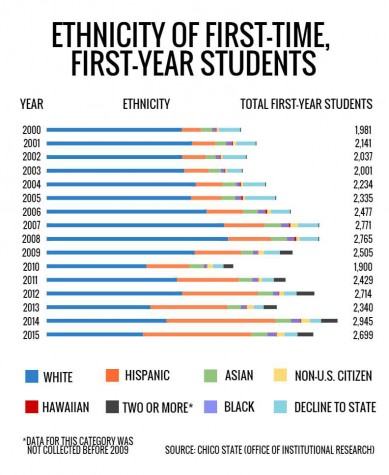

Gabriel Sandoval can be reached at [email protected] or @GLuisSandoval on Twitter.



